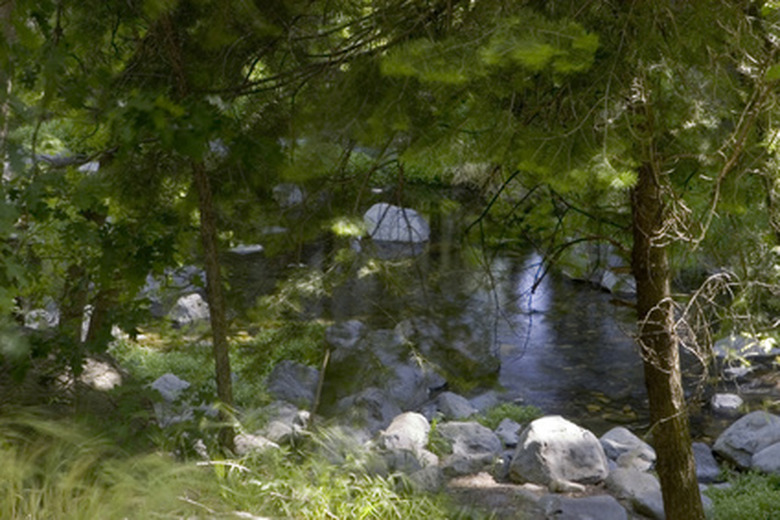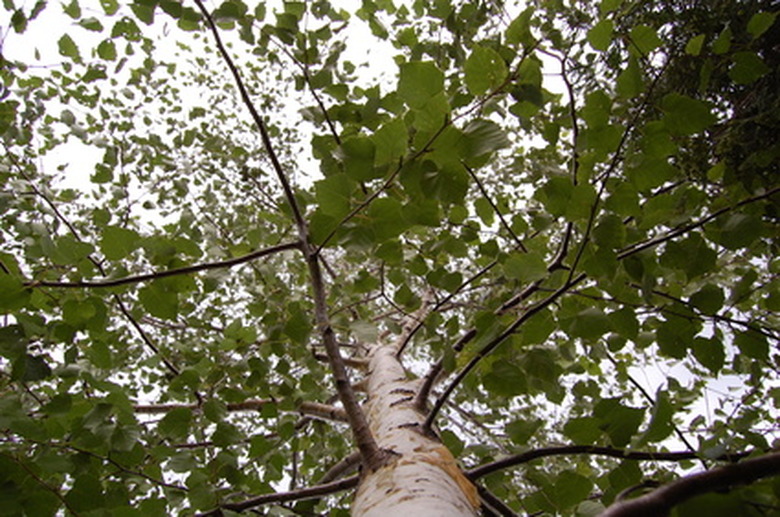Ash & Elm Trees Of Arizona
People in Arizona who want to use shade trees for their home landscaping needs should choose trees that are adaptable to the dry, hot growing conditions in the Grand Canyon State. Look for drought-tolerant trees that are also resistant to insects and diseases. For example, ash trees provide welcome shade from the Arizona desert sun, and Chinese elms are not as susceptible to pests as American elms. Which trees you plant depends on what part of the state you live in and on the size of your yard.
Arizona Ash
Arizona ash (Fraxinus velutina), also called velvet ash, belongs to the Olive (Oleaceae) family. These fast-growing, deciduous trees are used for landscaping but also grow wild in their native Arizona and southwestern New Mexico, where their habitat includes riparian canyons and large washes.
Arizona ash thrive in full sun, grow in alkaline soil and require moderate watering. They have excellent heat tolerance and are hardy in cold winter temperatures. Trees are 30 to 50 feet tall and can have a 45-to-60-foot spread with a round crown.
The tree has clusters of creamy white flowers that bloom in spring and are allergenic, and the leaves have a glossy green upper surface and are soft and velvety underneath. The tree's bark is smooth and gray when young, darkening to gray-brown when older and developing fissures and scaly ridges.
Before planting a new ash tree, be sure your yard is big enough for such a large tree. Ash trees can be very lush and attractive. However, according to Arboreal Tree Experts of Mesa, Arizona, "ash trees that are uncared for easily become an eyesore and much more likely to be host to various pests and tree diseases." Certain varieties of ash are somewhat drought resistant, but most require plenty of water.
Shamel Ash
The Shamel ash (Fraxinus uhdei), also called the evergreen ash or Mexican ash, grows in the low desert and is semi-deciduous in colder climates. The Shamel has attractive foliage, is fast-growing and has glossy dark green compound leaves. The height is usually 40 to 50 feet and the width or spread is equal or slightly less than that.
Male and female flowers grow on separate trees and bloom in the spring. The Shamel ash requires pruning and is a high-maintenance, messy tree that drops leaves in the fall.
Chinese Elm
Chinese elm trees (Ulmus parvifolia) in Arizona are also called evergreen elms and lace bark elms. These elms, which are native to China, Korea and Japan, were introduced into the United States and have proved to be highly resistant to Dutch elm disease and the elm leaf beetle, both of which have been very destructive to the native American elm. Landscapers and gardeners have planted it successfully as an ornamental shade tree on lawns, along streets and in parks, and it seems to survive well in extreme climates.
According to the Gilbert, Arizona, Water Conservation website, the Chinese evergreen elm grows quickly and "can reach a height of 30 feet in as little as eight years." Soon after, it reaches its full size of 35 feet high with an equally large spread.
The leaves are shiny dark green above and pale below, and it has small, light green clustered flowers that bloom in late February to April. The bark is smooth and mottled green, gray and orange and sheds in thin flakes, exposing orange to reddish brown inner bark, with layers that look like jigsaw puzzle pieces.
Evergreen elms are not susceptible to many pests or diseases, but they can be vulnerable to root rot in the Arizona desert. They prefer full sun and deep soil with good drainage and need deep, infrequent irrigation.

